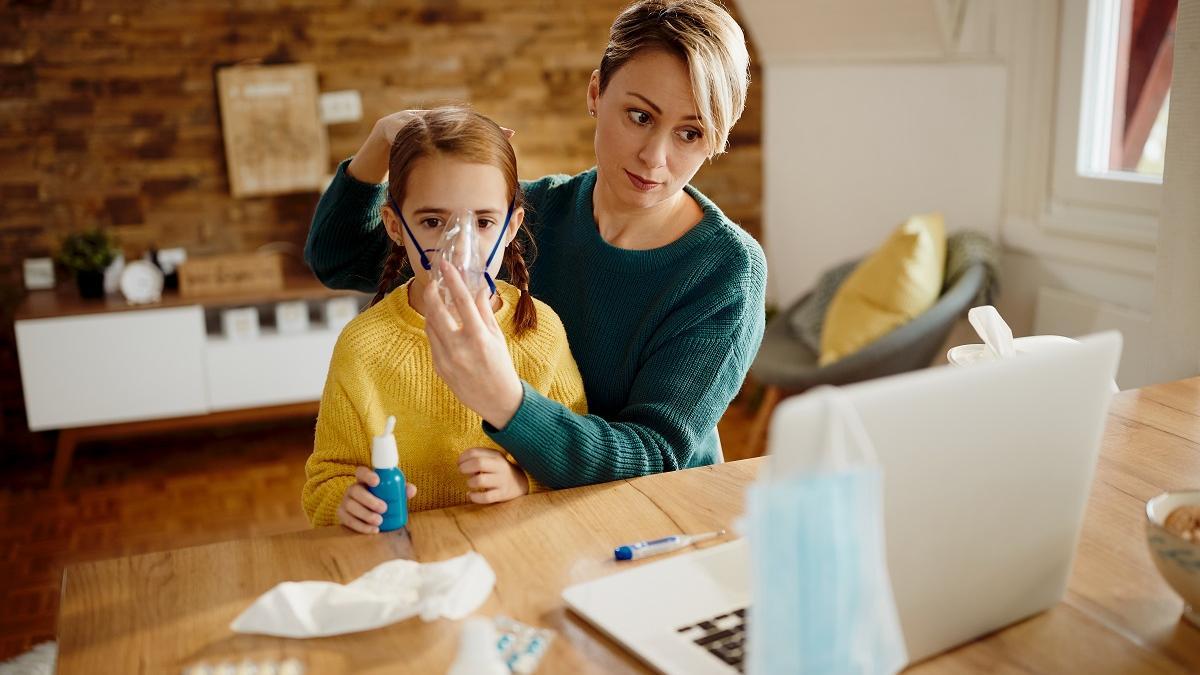Babies and young children are most susceptible to infection Respiratory Diseasesespecially in the fall and winter if they go to a daycare center because “ immune system Teresa Cenarro, vice-president of the Spanish Association of Primary Care Paediatrics (AEPap), said, “Babies are immature in the first few years of life. However, most children will develop symptoms”Moderate“Although there will be discomfort, there are few complications because Cough, fever, or runny nose They can prevent children from eating or sleeping well and can obviously cause concern for parents, especially if it’s their first time doing it.
Although there are many respiratory diseases, most are caused by respiratory diseases. virus or bacteriathis symptom They are usually common: cough, fever, mucus, difficulty breathing, tiredness, etc. There’s no need to run to the doctor or the emergency room when early symptoms appear; symptoms can be relieved by nasal irrigation, making sure your child drinks plenty of fluids and honey to relieve coughs and sore throats, or using fever-reducing medications to reduce fever. However, when severe respiratory distress or general discomfort occurs, a visit to a pediatrician is recommended.
The most common respiratory disease is Bronchitis, pneumonia, pharyngitis, nasopharyngitis, laryngitis, asthma or various allergies that cause respiratory problems. Dr. Senaro said that among the major diseases, bronchiolitis stands out because of its higher incidence and because in young children “it causes symptoms of dyspnea, which are more severe.”
respiratory syncytial virus
Bronchiolitis is a disease mainly caused by respiratory syncytial virus (RSV), which affects the circulation in the bronchioles (bronchioles), especially during the colder months. November to March. Most bronchiolitis is mild, causing cold-like symptoms that clear up after a few days. However, when the process drags on and you experience difficulty breathing or chest wheezing, it is recommended to see a doctor as this may lead to serious illness.
In fact, acute bronchiolitis accounts for 18% of pediatric hospitalizations, and it is estimated that up to 70% of children may suffer from the infection at some time, especially in the first year of life.
influenza
Likewise, pediatricians stress influenza and classifies it as a “pediatric disease” because it currently causes more infections in children. In fact, hospitalization rates for two-year-olds are similar to or even higher than those for people over 65. Furthermore, scientific evidence shows that children are the primary communicators.
Complications caused by the flu in children often include the following symptoms, in addition to fever, fatigue, and general malaise: otitis, more than 20% of the cases. It also tends to exacerbate chronic conditions such as asthma or cystic fibrosis. In fact, during flu season, pediatric consultations increase by 50% to 100%.
Fortunately, the immunization schedule starting with the 2023-2024 season has been incorporated vaccine Both diseases can be prevented.On the one hand, the monoclonal antibody Nirsevimab has been incorporated, administered as a vaccine and prevents Bronchiolitis. It is suitable for newborns and children under six months of age, as well as children under 2 years of age with risk factors. On the other hand, children between six months and five years have been included among those who should be vaccinated. influenza, Designed to reduce high morbidity rates in the child population and protect those who live with them.
prevention
To avoid contagion, it is recommended handwashing If your child is infected, do not take him to school as he may infect other classmates, try to make him cough by covering his mouth and nose, and make sure he does not share eating utensils, towels or toothbrushes.

